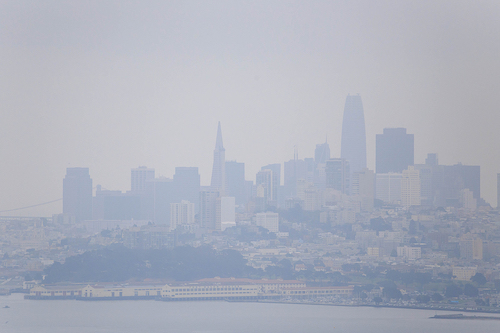 Air pollution is associated with depressive symptoms in adolescents.
Air pollution is associated with depressive symptoms in adolescents.
Researchers at the University of Denver found that even in neighbourhoods that met air quality standards, exposure to ozone gas lead to symptoms like sadness, difficulties concentrating and thoughts of suicide in adolescents over time.
“We’ve known for a while that exposure to air pollution is harmful for our physical health. It can increase the risk of asthma, heart disease, and other problems. However, less attention has been paid to potential mental health effects. I was interested in whether exposure to ambient ozone would show similar associations with for one form of mental health challenge: depressive symptoms,” Erin Manczak, PhD, lead researcher and an assistant professor of psychology at the University of Denver told Theravive.
“We found that teenagers who were living in areas with relatively higher average ozone showed larger increases in depressive symptoms over a four-year period as compared to teens living in areas with relatively lower ozone.”
Ozone is a form of gas that is created when pollutants from power plants, motor vehicles and other sources react with sunlight.
To understand the impact of ozone on mental health, the researchers examined data from a different study of 213 adolescents aged between nine and 13 years old. The adolescents lived in the San Francisco Bay area.
Data about the adolescents’ mental health over a four-year period was compared with their home address and the air quality data for those locations gathered from the California Environmental Protection Agency.
They found that the adolescents who lived in areas with higher levels of ozone displayed an increase in depressive symptoms over time. This occurred even if their neighbourhood failed to exceed national or state standards of air quality.
It is believed that ozone and other forms of air pollution may cause high levels of inflammation in the body, which in turn may be associated with the development of depression. Adolescents in particular may be sensitive to this due to the large amount of time they spend indoors.
The researchers note that their study is small in sample size, and further investigations are needed to determine the effects of ozone on a larger sample.
“Of course, we need more research to replicate and extend this work. That said, other research on physical health outcomes also is increasingly pointing to maladaptive associations even for low levels of ozone,” Manczak said.
“One possibility would be that we might consider adjusting the air quality standards to recognize this lower risk, which would then affect regulations around emissions. And more importantly, individual, community, and global efforts to limit and reduce air pollution will be critical for lowering potential harm.”
The study is the latest in a growing body of research that suggests environmental factors play a significant role in mental health. Manczak says climate change will also likely play a role.
“It’s likely that climate change is impacting mental health through several pathways. First, living in a community that is harmed or threatened to be harmed by a changing climate increases stress and trauma, which can lead to many negative psychological outcomes,” she said.
“Second, direct exposure to certain toxicants associated with climate disasters can also affect biological pathways that, in turn, impact mental health outcomes. Thus, it seems likely that the threat of climate change, mechanisms of climate change, and the aftermath of climate change may affect mental health.”
Air pollution disproportionately impacts those living in marginalized communities, and likely further contributes to health disparities for those people.
The researchers say that communities may consider ways to reduce a person’s exposure to ozone, like holding youth sport events indoors.
“One of the easiest things to do on an individual level would be to pay more attention to air quality alerts where you live. For example, in the US, airnow.gov is a website that can give you information about local conditions,” Manczek said.
“If air quality is poor, it would be wise to limit outdoor exposure if possible and to reduce the intensity of exertion when outside. Likewise, avoiding contributing to worse ozone by not fuelling your car or driving on days with high ozone is helpful.”
Elizabeth Pratt is a medical journalist and producer. Her work has appeared on Healthline, The Huffington Post, Fox News, The Australian Broadcasting Corporation, The Sydney Morning Herald, News.com.au, Escape, The Cusp and Skyscanner. You can read more of her articles here. Or learn more about Elizabeth and contact her via her LinkedIn and Twitter profiles.